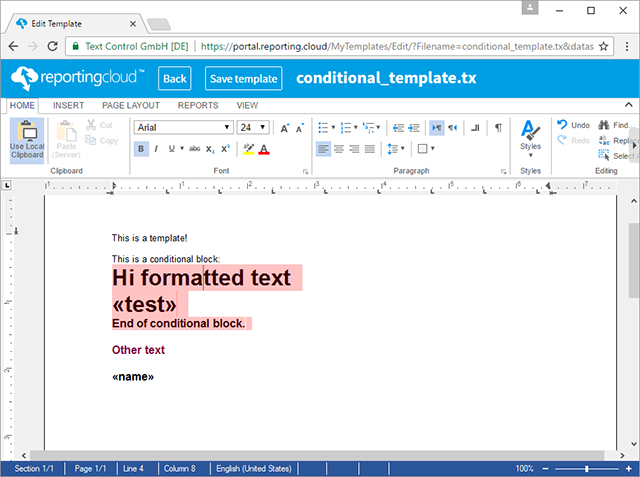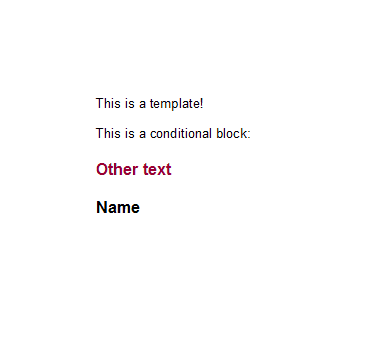In several applications, it is required to render or to remove a complete text block in a template based on specific conditions. The following screenshot shows a template with a merge block (highlighted in red) that should be rendered, if the merge data contains data for this specific block with the name conditional:

Consider, we have the following classes as the data source in C# .NET:
| public class Report | |
| { | |
| public string name { get; set; } | |
| public Conditional conditional { get; set; } | |
| } | |
| public class Conditional | |
| { | |
| public string test { get; set; } | |
| } |
The following code creates a new instance of the data class Report and an empty Conditional class. In the MergeSettings object, which is part of the ReportingCloud MergeBody, the RemoveEmptyBlocks property is set to true.
| Report report = new Report(); | |
| report.name = "Name"; | |
| report.conditional = new Conditional(); | |
| ReportingCloud rc = new ReportingCloud("username", "password"); | |
| MergeBody body = new MergeBody(); | |
| body.MergeData = report; | |
| body.MergeSettings = new MergeSettings() { | |
| RemoveEmptyBlocks = true | |
| }; | |
| List<byte[]> docs = rc.MergeDocument(body, "conditional_template.tx", ReturnFormat.TX); |
In case, the data for the merge block conditional is empty, the complete merge block gets removed, if RemoveEmptyBlocks is set to true. The following animation shows the result for both cases:

The logic that defines which block gets rendered or removed is not part of the template, but your data source and therefore, part of your application.

